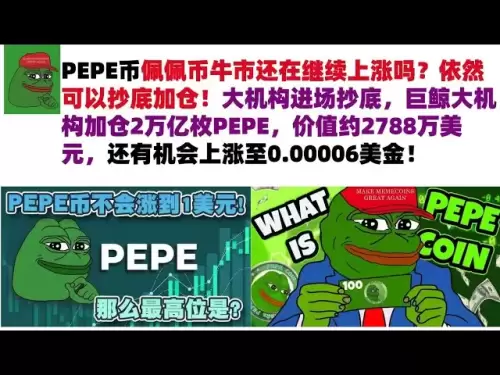-
 Bitcoin
Bitcoin $107,631.9817
-1.73% -
 Ethereum
Ethereum $2,739.1787
-4.61% -
 Tether USDt
Tether USDt $1.0000
-0.01% -
 XRP
XRP $2.2427
-3.30% -
 BNB
BNB $664.0527
-0.73% -
 Solana
Solana $158.0902
-5.38% -
 USDC
USDC $0.9998
-0.01% -
 Dogecoin
Dogecoin $0.1876
-7.78% -
 TRON
TRON $0.2753
-3.21% -
 Cardano
Cardano $0.6820
-5.55% -
 Hyperliquid
Hyperliquid $43.0171
-0.38% -
 Sui
Sui $3.3308
-4.87% -
 Chainlink
Chainlink $14.3431
-7.89% -
 Avalanche
Avalanche $21.0266
-6.48% -
 Bitcoin Cash
Bitcoin Cash $437.7657
-1.56% -
 Stellar
Stellar $0.2746
-2.52% -
 UNUS SED LEO
UNUS SED LEO $8.8665
-1.96% -
 Toncoin
Toncoin $3.1885
-3.37% -
 Shiba Inu
Shiba Inu $0.0...01260
-6.84% -
 Hedera
Hedera $0.1686
-4.93% -
 Litecoin
Litecoin $88.8406
-5.16% -
 Polkadot
Polkadot $4.0542
-6.28% -
 Monero
Monero $322.5806
-4.20% -
 Ethena USDe
Ethena USDe $1.0004
-0.02% -
 Bitget Token
Bitget Token $4.7089
-3.10% -
 Dai
Dai $0.9998
-0.01% -
 Pepe
Pepe $0.0...01206
-9.06% -
 Uniswap
Uniswap $7.8694
-5.20% -
 Pi
Pi $0.6232
-2.68% -
 Aave
Aave $301.3815
-3.83%
How to adjust the long and short volume energy indicator? Which group of numbers are used for short-term trading?
The long and short volume energy indicator helps traders gauge market sentiment by tracking long and short position volumes, useful for short-term crypto trading strategies.
Jun 09, 2025 at 12:36 am
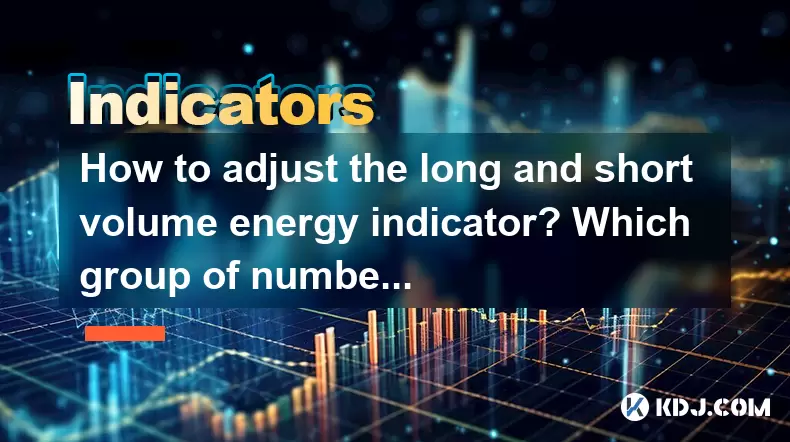
Introduction to the Long and Short Volume Energy Indicator
The long and short volume energy indicator is a powerful tool used by traders in the cryptocurrency market to gauge market sentiment and potential price movements. This indicator measures the volume of long and short positions in the market, providing insights into whether the market is dominated by bullish or bearish traders. Understanding and adjusting this indicator can significantly enhance your trading strategy, especially for those engaged in short-term trading.
What is the Long and Short Volume Energy Indicator?
The long and short volume energy indicator essentially tracks the trading volumes of long (buy) and short (sell) positions over a specified period. By analyzing this data, traders can identify trends and make informed decisions. The indicator displays the volume of long positions in green and short positions in red, making it visually easy to interpret the market's direction.
How to Adjust the Long and Short Volume Energy Indicator
Adjusting the long and short volume energy indicator involves setting parameters that align with your trading strategy. Here’s a detailed guide on how to do it:
- Open your trading platform: Navigate to the section where you can add or modify indicators.
- Select the Long and Short Volume Energy Indicator: This might be under a category like "Volume Indicators" or "Market Sentiment Indicators."
- Adjust the time frame: Depending on your trading style, you can set the time frame to minutes, hours, or days. For short-term trading, a time frame of 15 minutes to 1 hour is typically used.
- Set the volume threshold: This determines the minimum volume that will be considered significant. A lower threshold might be more suitable for volatile cryptocurrencies.
- Customize the colors and layout: While the default colors are usually green for long and red for short, you can adjust these to your preference.
- Apply the settings: Once you are satisfied with your adjustments, apply the settings and observe the indicator on your chart.
Which Group of Numbers are Used for Short-Term Trading?
For short-term trading, the most relevant group of numbers are those that reflect the immediate market sentiment and volume changes within a short period. Specifically, traders focus on:
- 15-minute to 1-hour volume data: This range provides a clear view of short-term trends without being overwhelmed by noise.
- Volume spikes: Sudden increases in volume can signal potential price movements. Traders watch for these spikes in both long and short volumes.
- Long-to-short ratio: This ratio helps traders understand the balance between bullish and bearish sentiment. A high long-to-short ratio might indicate a bullish market, while a low ratio suggests bearish sentiment.
Interpreting the Long and Short Volume Energy Indicator for Short-Term Trading
To effectively use the long and short volume energy indicator for short-term trading, it's crucial to understand how to interpret the data it provides:
- Look for divergence: If the price is moving in one direction but the volume energy indicator shows the opposite trend, it could signal a potential reversal.
- Watch for volume confirmation: A price move accompanied by a significant increase in volume (either long or short) is more likely to sustain.
- Monitor the long-to-short ratio: A rapid change in this ratio can indicate shifting market sentiment, which is particularly useful for short-term traders.
Practical Example of Using the Indicator for Short-Term Trading
Let's walk through a practical example of how a trader might use the long and short volume energy indicator for short-term trading:
- Identify a trend: Suppose you notice that the price of Bitcoin has been steadily increasing over the last hour.
- Check the volume energy indicator: You see that the volume of long positions (green) has been increasing alongside the price, confirming the bullish trend.
- Look for entry points: You decide to enter a long position when you see a minor dip in price but the volume of long positions remains high, suggesting continued bullish sentiment.
- Set stop-loss and take-profit levels: Based on the volume data, you set your stop-loss just below the recent low and your take-profit at a level where you anticipate a potential decrease in long volume.
Fine-Tuning the Indicator for Different Cryptocurrencies
Different cryptocurrencies may require different settings for the long and short volume energy indicator due to their unique trading characteristics:
- Bitcoin: As the most liquid cryptocurrency, Bitcoin might require a higher volume threshold to filter out less significant movements.
- Altcoins: For less liquid cryptocurrencies, a lower volume threshold can be more effective in capturing meaningful trends.
- Stablecoins: Since stablecoins often have less volatility, a shorter time frame might be necessary to detect subtle changes in market sentiment.
Common Mistakes to Avoid When Using the Indicator
When using the long and short volume energy indicator, it's important to be aware of common pitfalls:
- Ignoring overall market context: Always consider broader market trends and news events that might affect the indicator's readings.
- Over-reliance on the indicator: Use the long and short volume energy indicator as one part of a comprehensive trading strategy, not the sole basis for decisions.
- Misinterpreting volume spikes: Not all volume spikes lead to significant price movements. Ensure you analyze the context of the spike before making a trading decision.
Frequently Asked Questions
Q: Can the long and short volume energy indicator be used for long-term trading?
A: While primarily designed for short-term trading, the indicator can be adjusted for longer time frames. For long-term trading, you might set the time frame to daily or weekly intervals to capture broader trends.
Q: Is the long and short volume energy indicator available on all trading platforms?
A: Availability varies by platform. Popular platforms like TradingView and MetaTrader often include this indicator or similar tools, but you may need to check your specific platform's offerings.
Q: How can I combine the long and short volume energy indicator with other technical indicators?
A: Combining indicators can provide a more robust trading strategy. For example, you might use the long and short volume energy indicator alongside moving averages to confirm trends or the Relative Strength Index (RSI) to gauge overbought or oversold conditions.
Q: Does the long and short volume energy indicator work for all types of cryptocurrencies?
A: The indicator can be applied to all cryptocurrencies, but its effectiveness may vary based on the liquidity and volatility of the asset. Highly liquid assets like Bitcoin may provide clearer signals, while less liquid altcoins might require more careful interpretation.
Disclaimer:info@kdj.com
The information provided is not trading advice. kdj.com does not assume any responsibility for any investments made based on the information provided in this article. Cryptocurrencies are highly volatile and it is highly recommended that you invest with caution after thorough research!
If you believe that the content used on this website infringes your copyright, please contact us immediately (info@kdj.com) and we will delete it promptly.
- Expert Predicts When Bitcoin (BTC) Price Could Hit a New All-Time High
- 2025-06-13 02:00:20
- US President Donald Trump Virtually Spoke at the Coinbase State of Crypto Summit
- 2025-06-13 02:00:20
- Arctic Pablo Coin (APC) Explodes Onto the Meme Coin Stage as One of the Top New Meme Coins for Exponential Returns
- 2025-06-13 01:55:12
- Litecoin (LTC) Price Nosedives as Bollinger Bands Signal Lingering Bearish Sentiment
- 2025-06-13 01:55:12
- DeFi Development Corp. (DFDV) Secures $5 Billion Equity Line of Credit from RK Capital Management
- 2025-06-13 01:50:12
- Tether Expands Gold Strategy with Stake in Elemental Altus Royalties
- 2025-06-13 01:50:12
Related knowledge
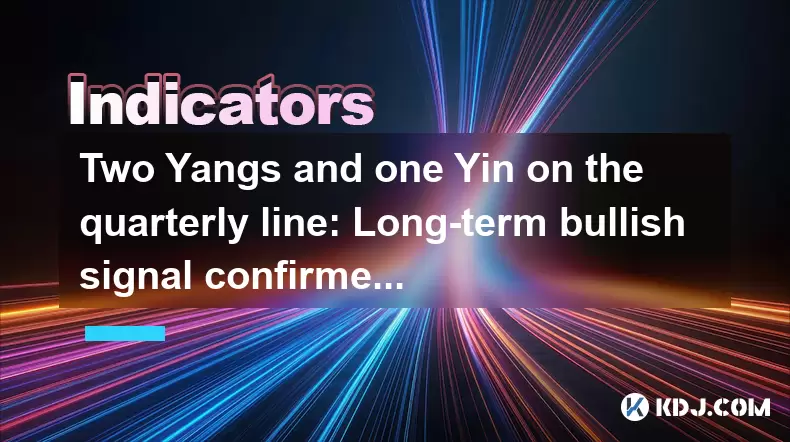
Two Yangs and one Yin on the quarterly line: Long-term bullish signal confirmed?
Jun 12,2025 at 07:00am
Understanding the 'Two Yangs and One Yin' Candlestick PatternIn technical analysis, candlestick patterns play a pivotal role in identifying potential market reversals or continuations. The 'Two Yangs and One Yin' pattern is one such formation that traders often observe on longer timeframes like the quarterly chart. This pattern consists of two bullish (...
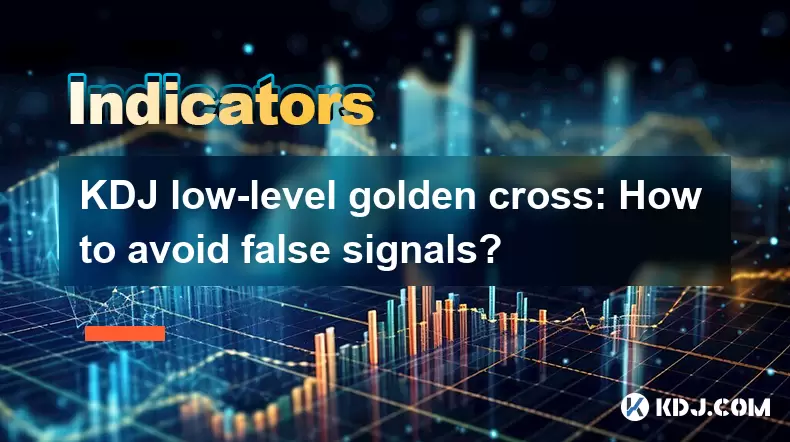
KDJ low-level golden cross: How to avoid false signals?
Jun 12,2025 at 08:21am
Understanding the KDJ IndicatorThe KDJ indicator, also known as the stochastic oscillator, is a momentum-based technical analysis tool widely used in cryptocurrency trading. It consists of three lines: the %K line (fast stochastic), the %D line (slow stochastic), and the %J line (divergence value). These lines oscillate between 0 and 100, helping trader...

Bottom-up volume stagnation: Is it accumulation or heavy selling pressure?
Jun 12,2025 at 01:42pm
What Is Bottom-Up Volume Stagnation?Bottom-up volume stagnation refers to a specific pattern observed in cryptocurrency trading charts where the price of an asset moves sideways or slightly downward, and trading volume remains consistently low over an extended period. This phenomenon is often seen after a sharp price drop or during a prolonged bear mark...
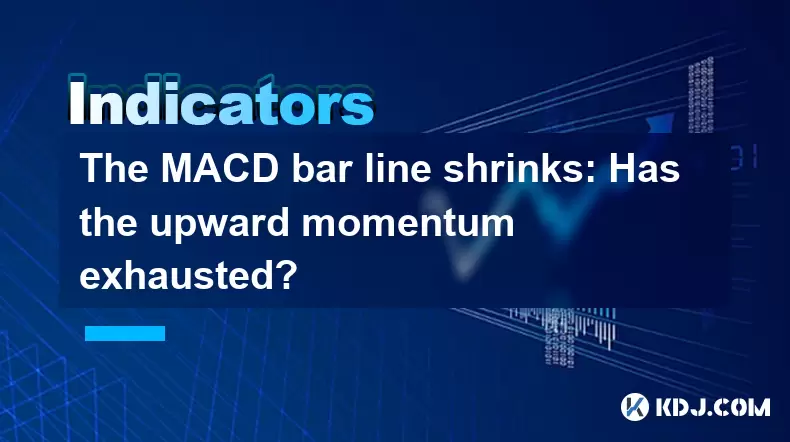
The MACD bar line shrinks: Has the upward momentum exhausted?
Jun 12,2025 at 12:49am
Understanding the MACD Bar LineThe Moving Average Convergence Divergence (MACD) is a widely used technical indicator in cryptocurrency trading. It consists of three main components: the MACD line, the signal line, and the MACD histogram (also known as the bar line). The MACD bar line represents the difference between the MACD line and the signal line. W...

The chip peak moves up: Is the main force quietly shipping?
Jun 12,2025 at 01:01am
Understanding the Chip Peak Movement in Cryptocurrency MiningIn recent years, the chip peak movement has become a critical topic within the cryptocurrency mining community. This phrase typically refers to the point at which mining hardware reaches its maximum efficiency and output capacity. When this peak shifts upward, it often signals changes in the s...
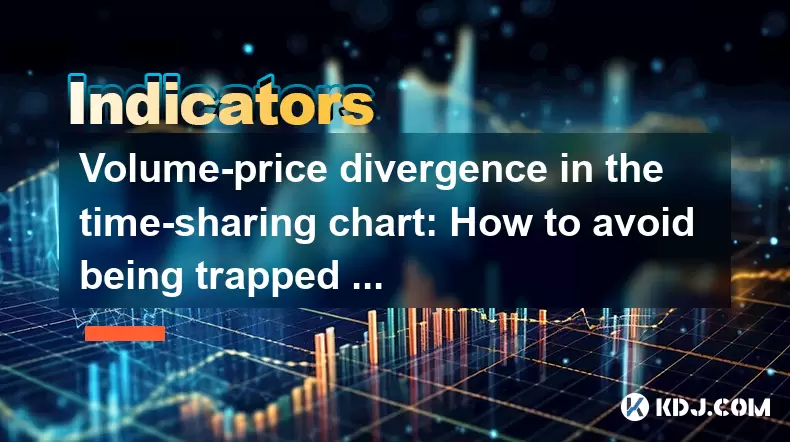
Volume-price divergence in the time-sharing chart: How to avoid being trapped on the same day?
Jun 12,2025 at 07:28pm
Understanding Volume-Price Divergence in Cryptocurrency TradingVolume-price divergence is a critical concept in technical analysis, especially within the fast-moving world of cryptocurrency trading. It refers to a situation where price movement and trading volume move in opposite directions. For instance, if the price of a cryptocurrency is rising while...

Two Yangs and one Yin on the quarterly line: Long-term bullish signal confirmed?
Jun 12,2025 at 07:00am
Understanding the 'Two Yangs and One Yin' Candlestick PatternIn technical analysis, candlestick patterns play a pivotal role in identifying potential market reversals or continuations. The 'Two Yangs and One Yin' pattern is one such formation that traders often observe on longer timeframes like the quarterly chart. This pattern consists of two bullish (...

KDJ low-level golden cross: How to avoid false signals?
Jun 12,2025 at 08:21am
Understanding the KDJ IndicatorThe KDJ indicator, also known as the stochastic oscillator, is a momentum-based technical analysis tool widely used in cryptocurrency trading. It consists of three lines: the %K line (fast stochastic), the %D line (slow stochastic), and the %J line (divergence value). These lines oscillate between 0 and 100, helping trader...

Bottom-up volume stagnation: Is it accumulation or heavy selling pressure?
Jun 12,2025 at 01:42pm
What Is Bottom-Up Volume Stagnation?Bottom-up volume stagnation refers to a specific pattern observed in cryptocurrency trading charts where the price of an asset moves sideways or slightly downward, and trading volume remains consistently low over an extended period. This phenomenon is often seen after a sharp price drop or during a prolonged bear mark...

The MACD bar line shrinks: Has the upward momentum exhausted?
Jun 12,2025 at 12:49am
Understanding the MACD Bar LineThe Moving Average Convergence Divergence (MACD) is a widely used technical indicator in cryptocurrency trading. It consists of three main components: the MACD line, the signal line, and the MACD histogram (also known as the bar line). The MACD bar line represents the difference between the MACD line and the signal line. W...

The chip peak moves up: Is the main force quietly shipping?
Jun 12,2025 at 01:01am
Understanding the Chip Peak Movement in Cryptocurrency MiningIn recent years, the chip peak movement has become a critical topic within the cryptocurrency mining community. This phrase typically refers to the point at which mining hardware reaches its maximum efficiency and output capacity. When this peak shifts upward, it often signals changes in the s...

Volume-price divergence in the time-sharing chart: How to avoid being trapped on the same day?
Jun 12,2025 at 07:28pm
Understanding Volume-Price Divergence in Cryptocurrency TradingVolume-price divergence is a critical concept in technical analysis, especially within the fast-moving world of cryptocurrency trading. It refers to a situation where price movement and trading volume move in opposite directions. For instance, if the price of a cryptocurrency is rising while...
See all articles

























